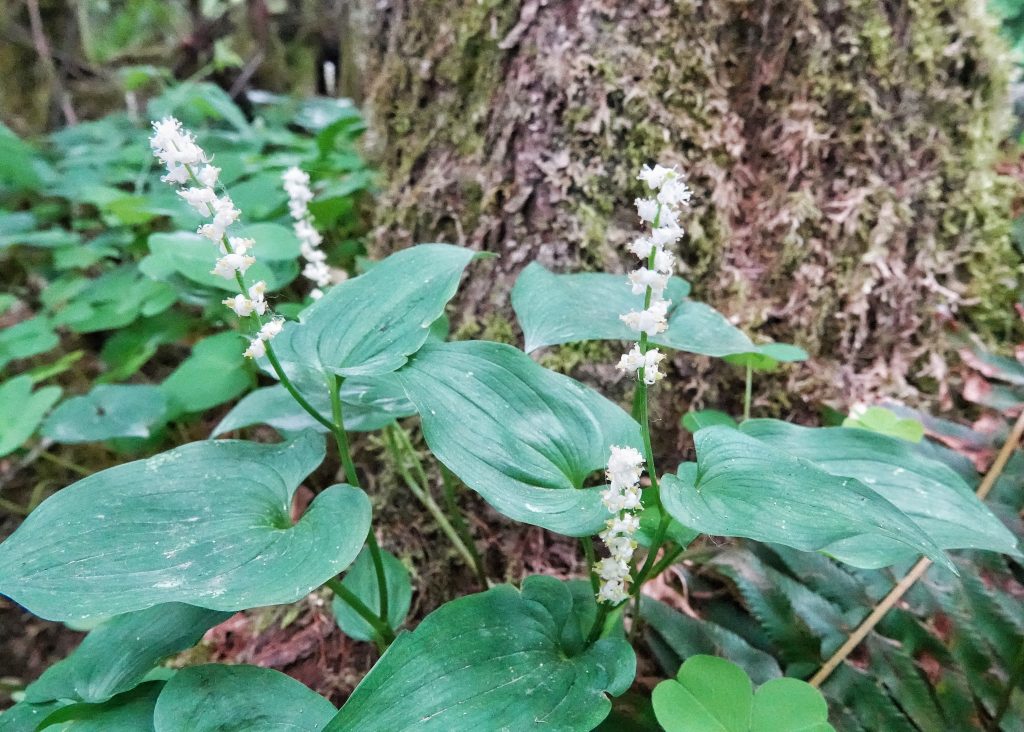
Maianthemum dilatatum is not a spectacular wildflower by itself, though they are certainly a pretty one. But large patches of them, a common site in the vernal woods, can be somewhat thrilling, and they provide a very interesting texture to the forest floor. When I say this I am particularly thinking of a patch I encountered a couple years ago at Leadbetter Point State Park, on the Long Beach Peninsula in Pacific County, Washington. Intermixed with a few western red-cedar and a sparse grouping of red alder, this mat of Maianthemum dilatatum may have covered as much as a half acre, the deep green of the thousands of heart shaped leaves being nicely contrasted by the multitude of upright stems of white flowers. I tried to photograph the totality of that population, but none of those photos even began to do it justice, and so you’ll just have to multiply the photo below by a hundred to get the idea.
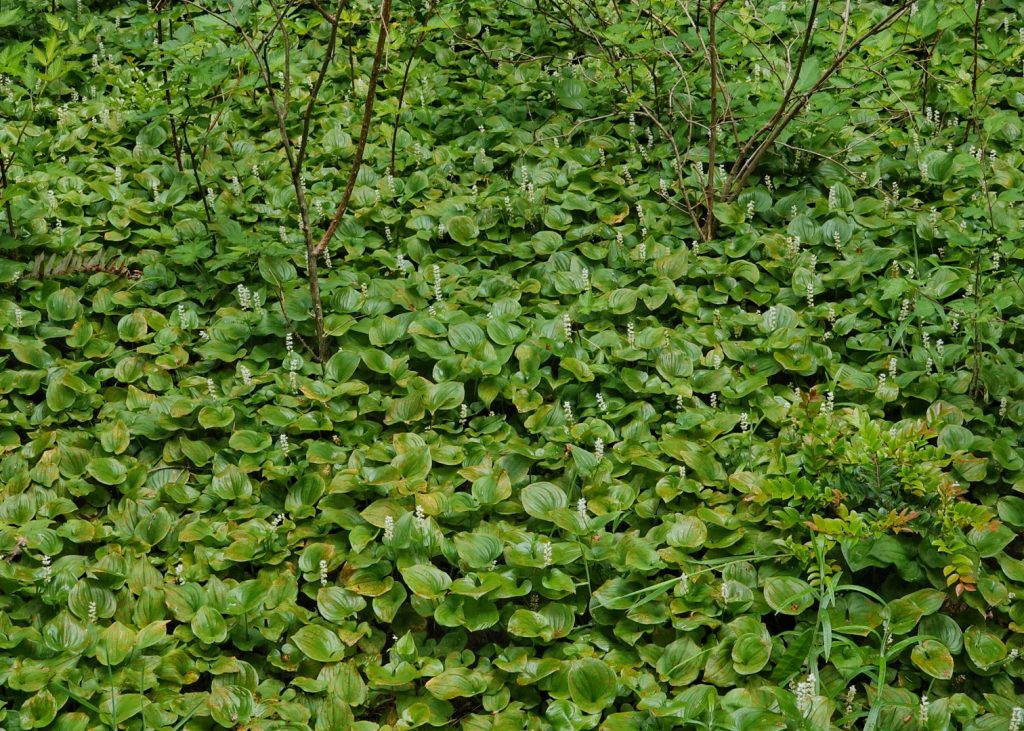
Pam and I have always called these May lilies, which was more appropriate when they were alone in our region in the genus Maianthemum (which is from the Latin word for ‘May’ and the Greek word for ‘flower’), but since Smilacina (comprising the Solomon’s seals in the PNW) has been merged into Maianthemum, other common names such as beadruby, false lily-of-the-valley, snakeberry, or two-leaved Solomon’s seal seem to be more popular with botanists.
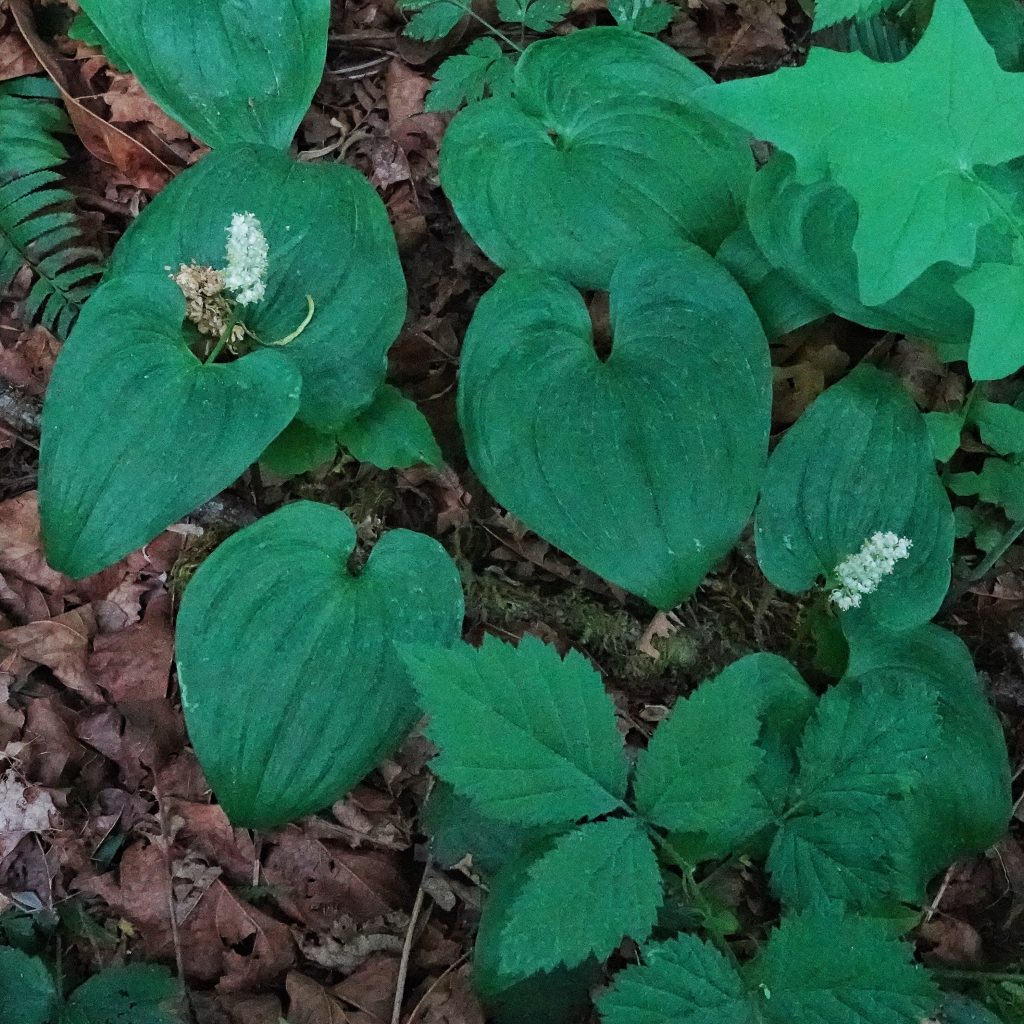
Ethnobotany– “Ripe berries occasionally eaten by hunters and berry pickers…Poultice of whole or mashed leaves used for boils and cuts…Infusion of pounded roots used as a wash for sore eyes…” are some of the 15 entries for this plant on BRIT – Native American Ethnobotany Database
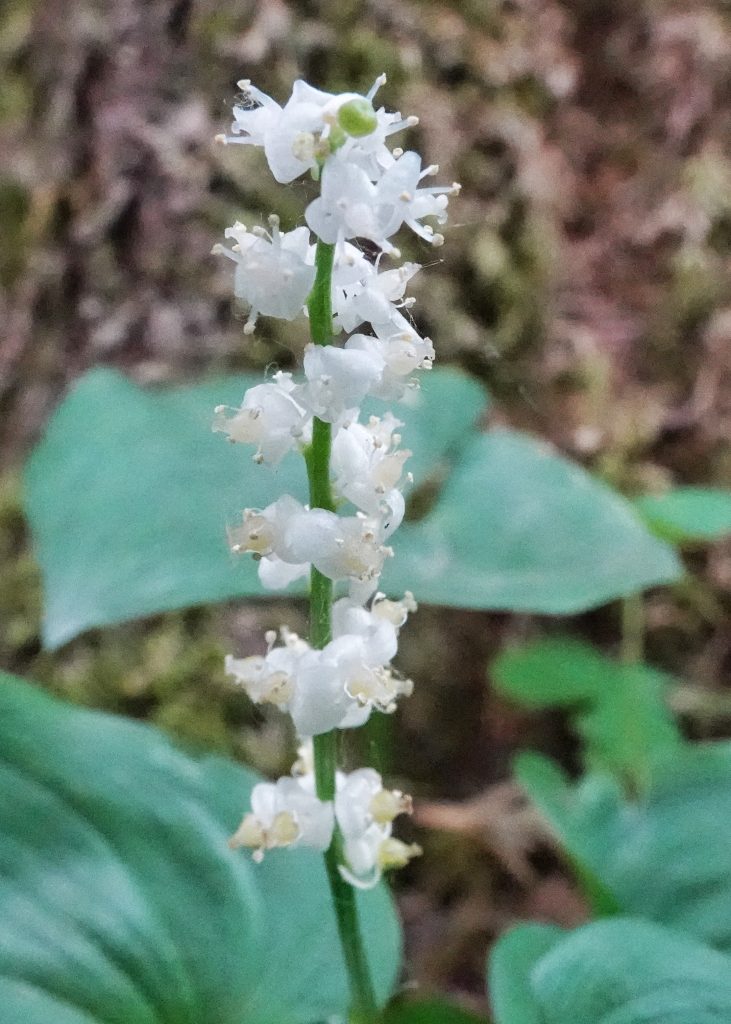
Description– Low growing (6-15” tall), with palmately veined leaves; “Stems erect, often in clumps from creeping roots. Leaves heart-shaped, to about 8 in. long by 4 in. wide, shiny, with 2–6 in. petioles, blades held more or less horizontally. Flowers fragrant, white, many in cone-shaped cluster topping stem above leaves, unique with parts in fours, not threes or sixes as with rest of lily family. Berries in autumn light green with brown mottling, turning bright red.” Maianthemum dilatatum | False Lily Of The Valley | Wildflowers of the Pacific Northwest
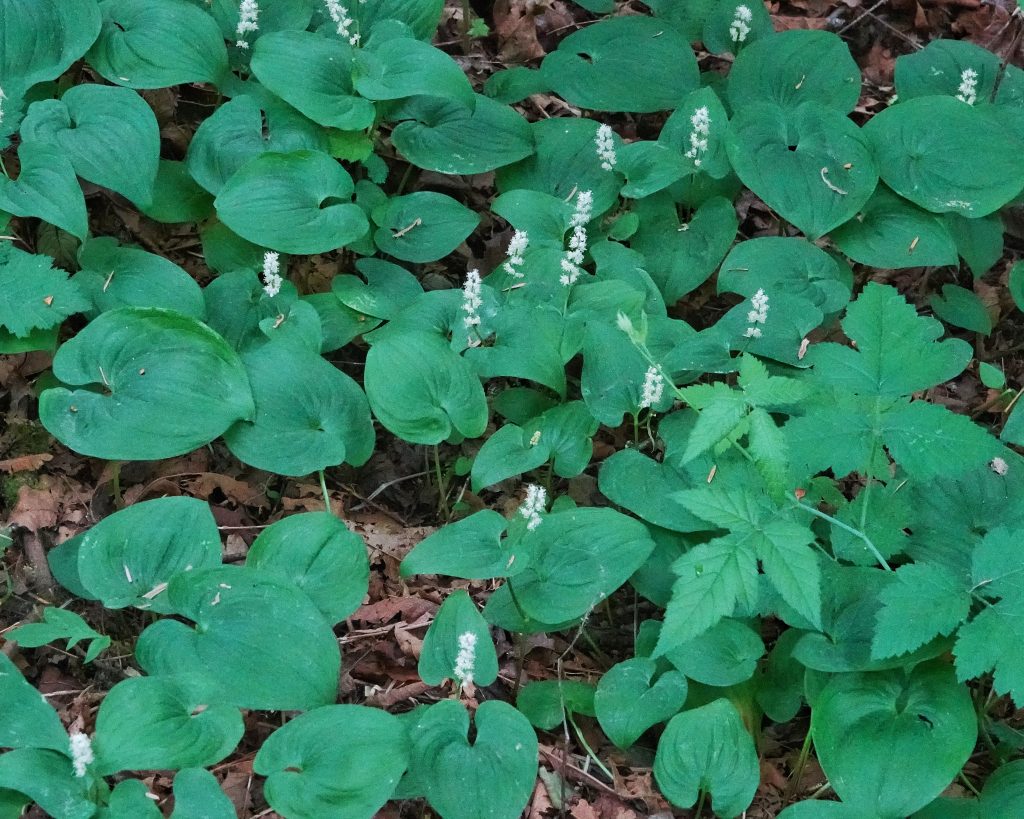
Similar species– Once it is flowering, nothing else is very similar to M. dilatatum; the leaves alone might be mistaken for Asarum caudatum (Western Wild Ginger, Long-tailed Wild Ginger), but the Asarum leaves have pinnate veins leading to roundish, raised areas.
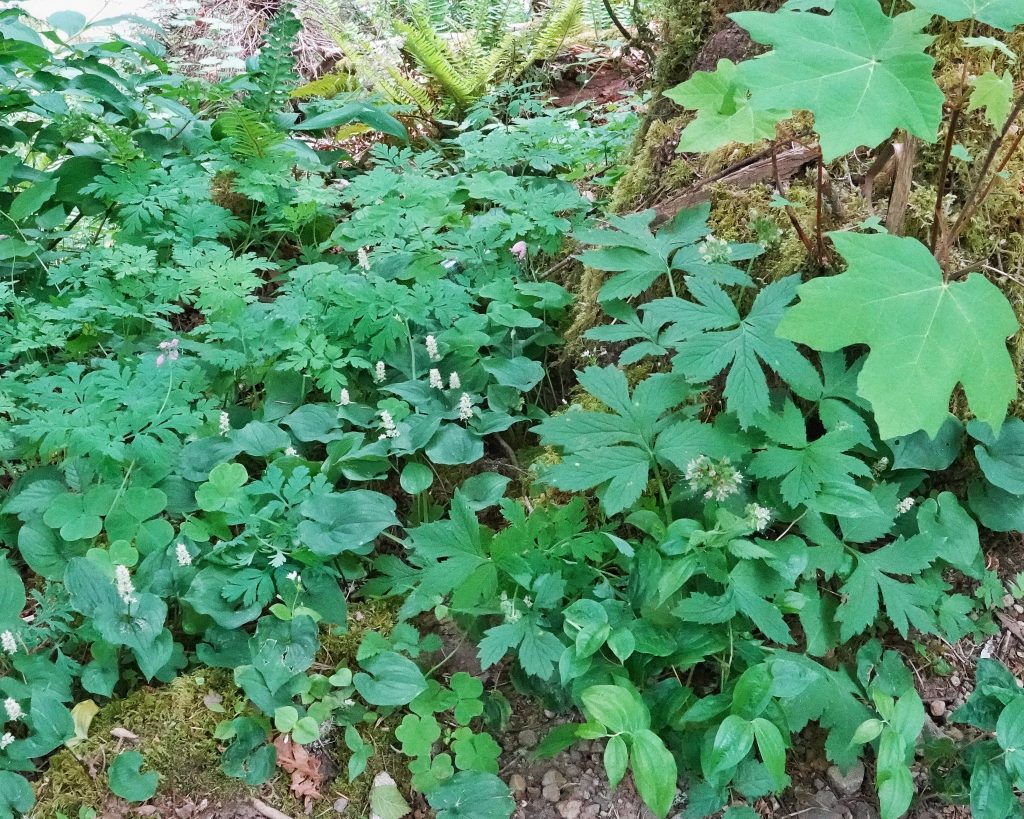
Habitat– “Shady, moist areas, open to dense woods, from sea level to middle elevations in the mountains.” Maianthemum dilatatum – Burke Herbarium Image Collection; Moist to wet environments, usually shady woods and riverside areas (Pojar and Mackinnon 1994). Sometimes forms the dominant groundcover in Sitka-spruce forests near the sea (Pojar and Mackinnon, 1994). M. dilatatum grows in light (sandy), medium (loamy) and heavy (clay) soils. The species prefers acid, neutral and basic (alkaline) soils. It can grow in full shade (deep woodland) or semi-shade (light woodland). It requires moist soil.” Species (common name, Latin name) – False lily-of-the-valley, two-leaves Solomons Seal, Maianthemum dilatatum
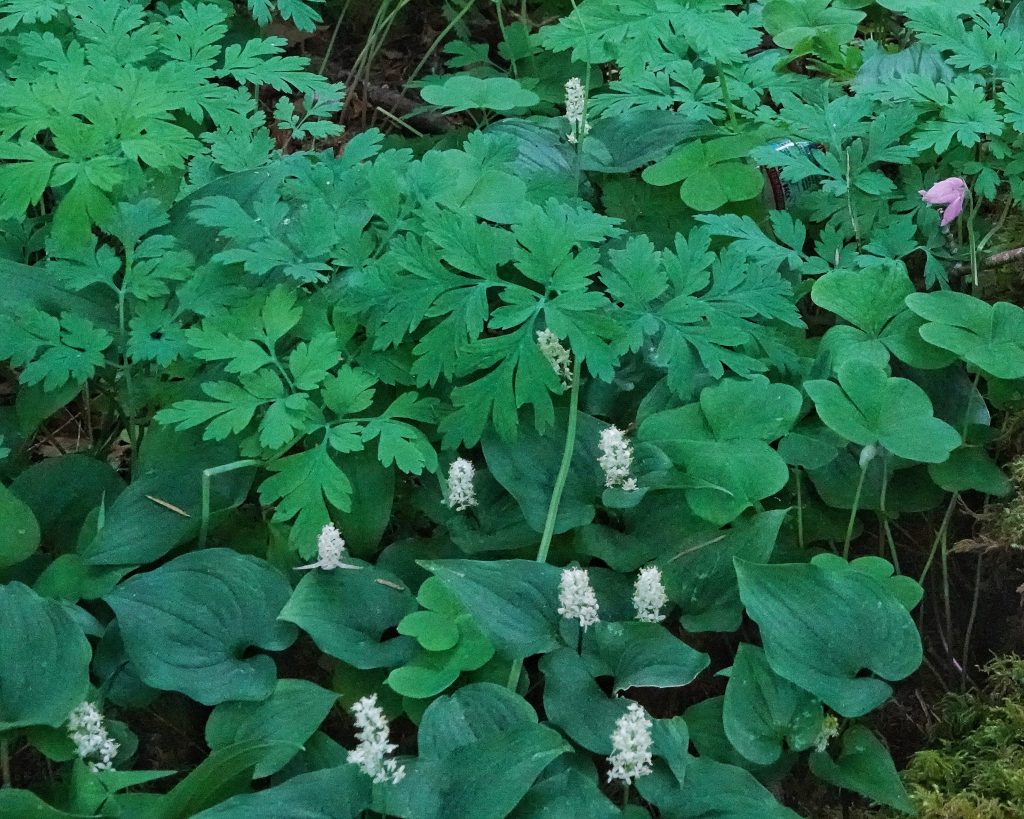
Range-Primarily found from the east side of the Cascades to the Pacific in our region, with populations also extending into the Columbia River Gorge, and across the Cascades into southern BC and northern Idaho, as well as in the coastally influenced parts of southwest Oregon/northwest California; also found near the coast from B/C into Alaska, and on the Kamchatka Peninsula in eastern Asia.
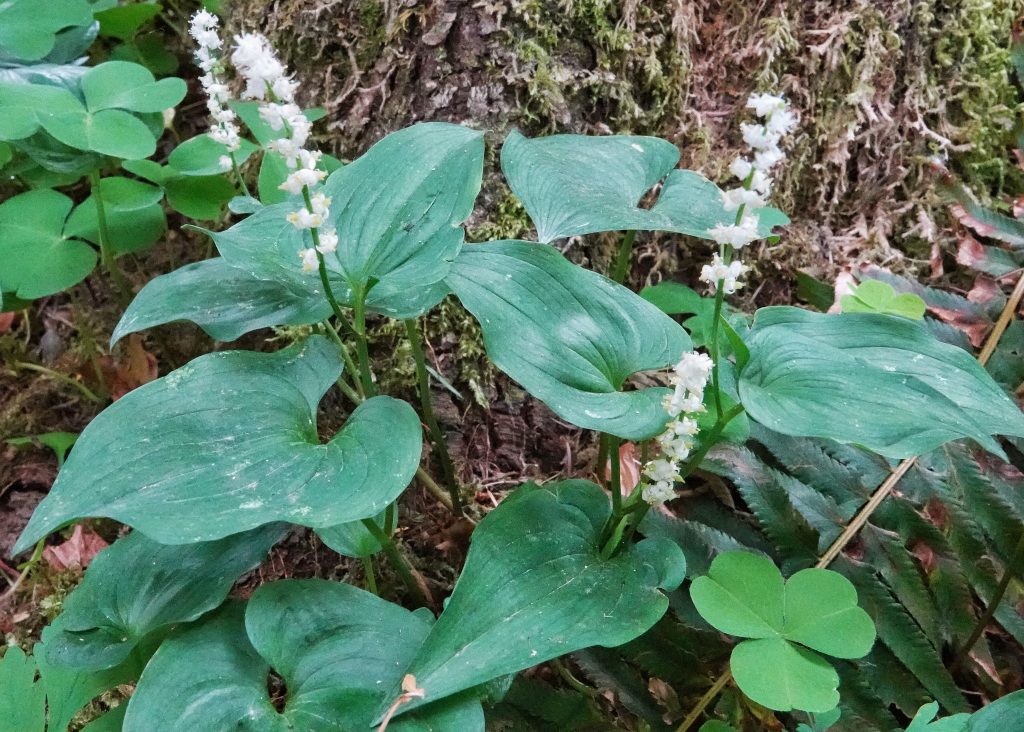
Eaten by– Larvae of the dung fly Parallelomma vittatum mines its leaves; birds and some mammals apparently eat the fruits; oddly, these are the only things I can find out about what eats this common plant.
Reproductive timing– Flowers from May-July, and the fruits ripen in late summer/fall.
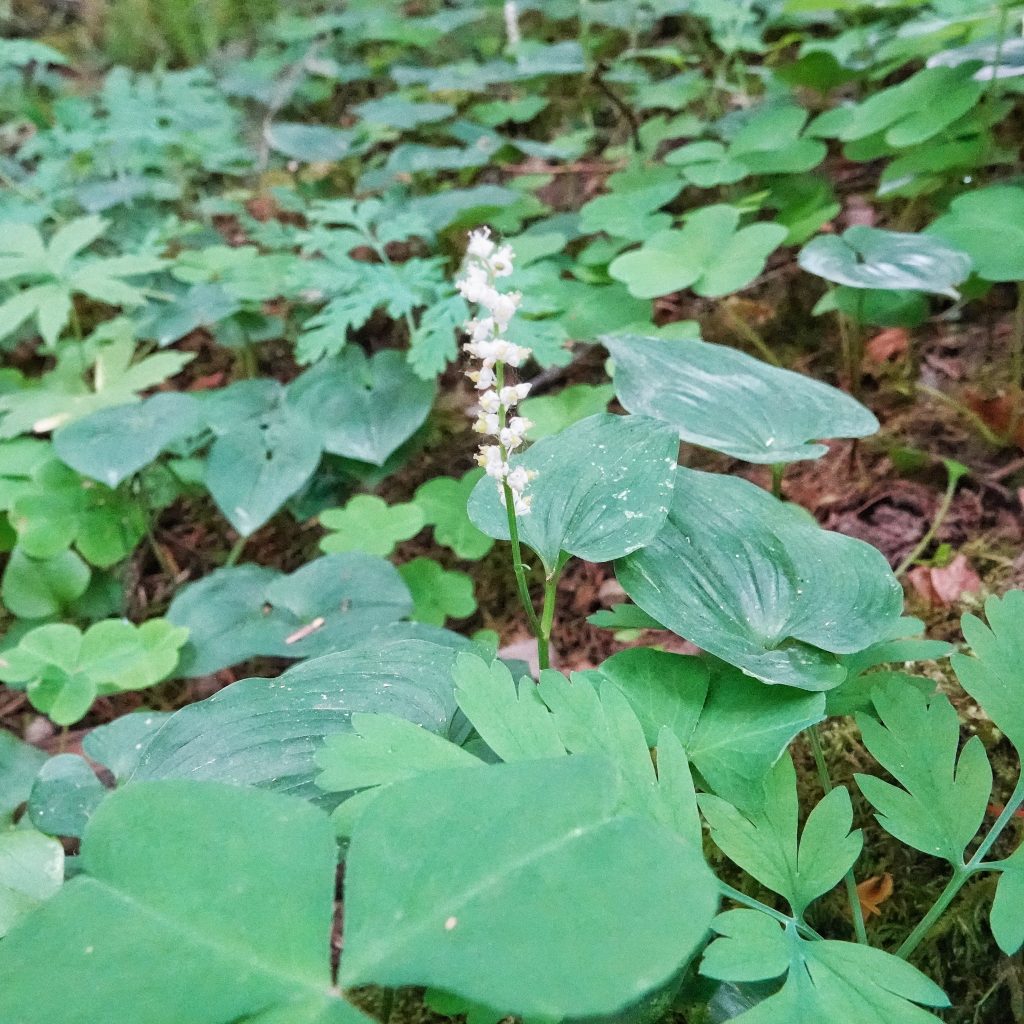
Etymology of names–Maianthemum is from the Latin word for ‘May’ and the Greek word for ‘flower’, reflecting the beginning bloom timing of the members of this genus. The specific epithet dilatatum is from the Latin for ‘broad’, which refers to the width of the leaf.
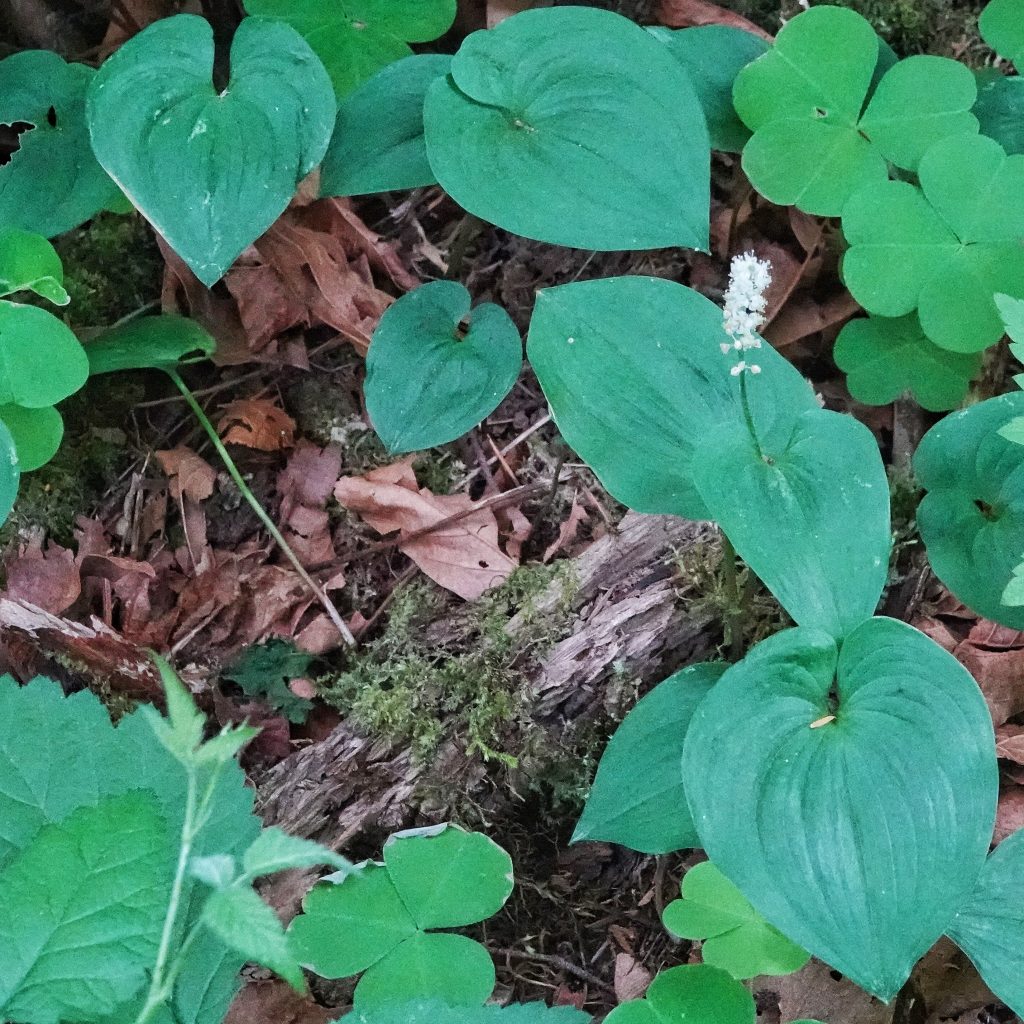
OregonFlora Maianthemum dilatatum
Maianthemum dilatatum | False Lily Of The Valley | Wildflowers of the Pacific Northwest
Maianthemum dilatatum in Flora of North America @ efloras.org
BRIT – Native American Ethnobotany Database
Maianthemum dilatatum – Burke Herbarium Image Collection
https://en.wikipedia.org/wiki/Maianthemum_dilatatum
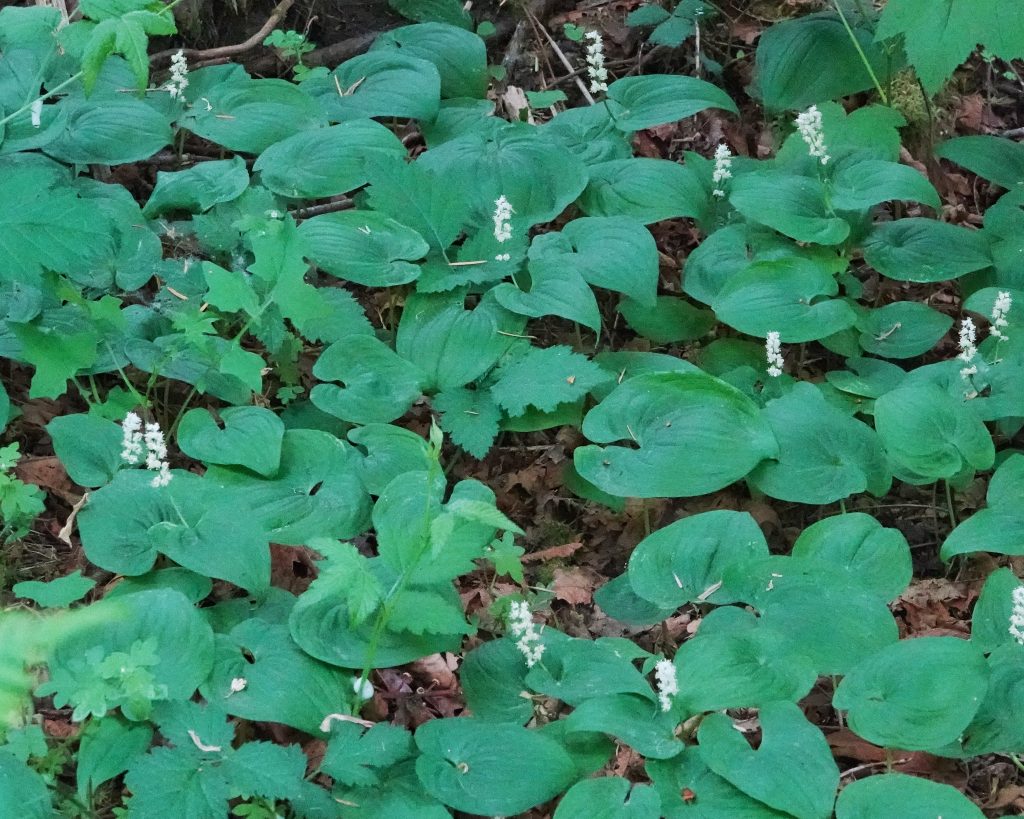
Whenever I see these I make a remark at how beautiful they are, but I’ve never looked up the name. I don’t know why not. Thank you for doing all the hard work for me/all of us!
Thanks for your appreciation, Kat!